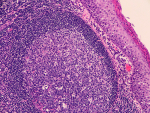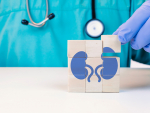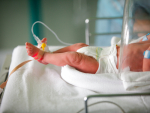Displaying items by tag: school of medicine
Some PD-1+CXCR5+CD4+ T cells will become germinal center-Tfh cells that are essential for B cells to become high-affinity antibody-producing cells. Others do not take that path, instead becoming memory T cells.
Tagged under
Hunter Caroline Davies will receive her master’s degree in anatomical science at UAB’s summer commencement Aug. 11. But she is already back in the classroom as part of the Heersink School of Medicine’s class of 2027.
Tagged under
Periodontal disease is one of the leading causes of tooth loss in adults and may be a risk factor in the development of Alzheimer’s disease.
Tagged under
In a mouse model, border-associated macrophages, not microglia, were essential for the neuroinflammation that precedes neurodegradation. Targeting this subset could be a disease-modifying therapy in neurodegenerative disease.
Tagged under
UAB scientist aims to inspire children from underrepresented backgrounds to pursue a career in science and help them understand that achieving their passions is possible.
Tagged under
$46 million awarded by NIH to UAB and partners allows researchers to continue following participants enrolled in the national Multicenter Osteoarthritis Study.
Tagged under
The newly introduced kidney function equation has value in predicting heart failure comparable to the old equation but may reduce racial disparities by improving access to heart failure therapy among Black heart failure patients.
Today the National Institutes of Health has announced that UAB’s own Jeanne Marrazzo, M.D., has been selected to succeed Anthony Fauci, M.D., as the next director of NIH’s National Institute of Allergy and Infectious Diseases (NIAID) this fall.
Tagged under
IN8bio has opened a new Birmingham facility, a 10,000-square-foot advanced research and development laboratory in the Martin Biscuit Building at Pepper Place.
Tagged under
This summer, 1,775 students will graduate and nearly 1,000 will walk in two commencement exercises in UAB’s Bartow Arena, which will be streamed online.
Tagged under
- release
- commencement 2023
- commencement
- office of the provost for student and faculty success
- office of the president
- school of dentistry
- school of education
- school of engineering
- school of health professions
- school of medicine
- school of optometry
- school of nursing
- school of public health
- collat school of business
- college of arts and sciences
- graduate school
- student affairs
- department of music
- honors college
- students
A first-of-its-kind endowment from art patrons Lydia Cheney and Jim Sokol will ensure the well-being of UAB’s Abroms-Engel Institute for the Visual Arts and contemporary art for years to come.
Tagged under
New research from UAB shows a possible link between poverty and a child’s possibility of having a relapse in their acute lymphoblastic leukemia.
Tagged under
As one of only five universities selected, UAB joins the NIH’s first major program to address how structural and institutional factors of persistent poverty relate to cancer.
Tagged under
Knowing the signs of this cancer can be lifesaving as sometimes the symptoms can mirror those of benign conditions.
Tagged under
The baby boy, born in late May 2023, is the first baby born from a uterus transplant outside of a clinical trial and UAB’s first baby from its uterus transplant program.
Tagged under
- release
- university of alabama system
- uab medicine
- school of medicine
- transplantation
- comprehensive transplant institute
- department of surgery
- division of transplantation
- department of obstetrics and gynecology
- division of gynecologic oncology
- division of maternal fetal medicine
- division of reproductive endocrinology and infertility
- department of radiology
- department of pathology
- department of medicine
- division of infectious diseases
- department of pediatrics
- womens history
Rising junior and UAB Honors College student Wajiha Mekki was recently selected for a prestigious internship with Johnson & Johnson.
Tagged under
Published results from two UAB studies found the duration of intermittent hypoxemia events and the presence and persistence of a patent ductus arteriosus after birth are two novel risk factors of BPD-PH in preterm infants.
The future has much potential as the REACH Up and Out program hopes to continue to make an impact on the lives of Black women in the Deep South.
Tagged under
Arushi Kotru, a spring 2023 UAB graduate, will have the opportunity to spend the summer in India learning Hindi as a recipient of the prestigious Critical Language Scholarship.
Tagged under
Despite fewer drivers on the roads and fewer injuries per accident, fatal crashes in Alabama increased by 26 percent over the three years from 2020 through 2022.
Tagged under



















